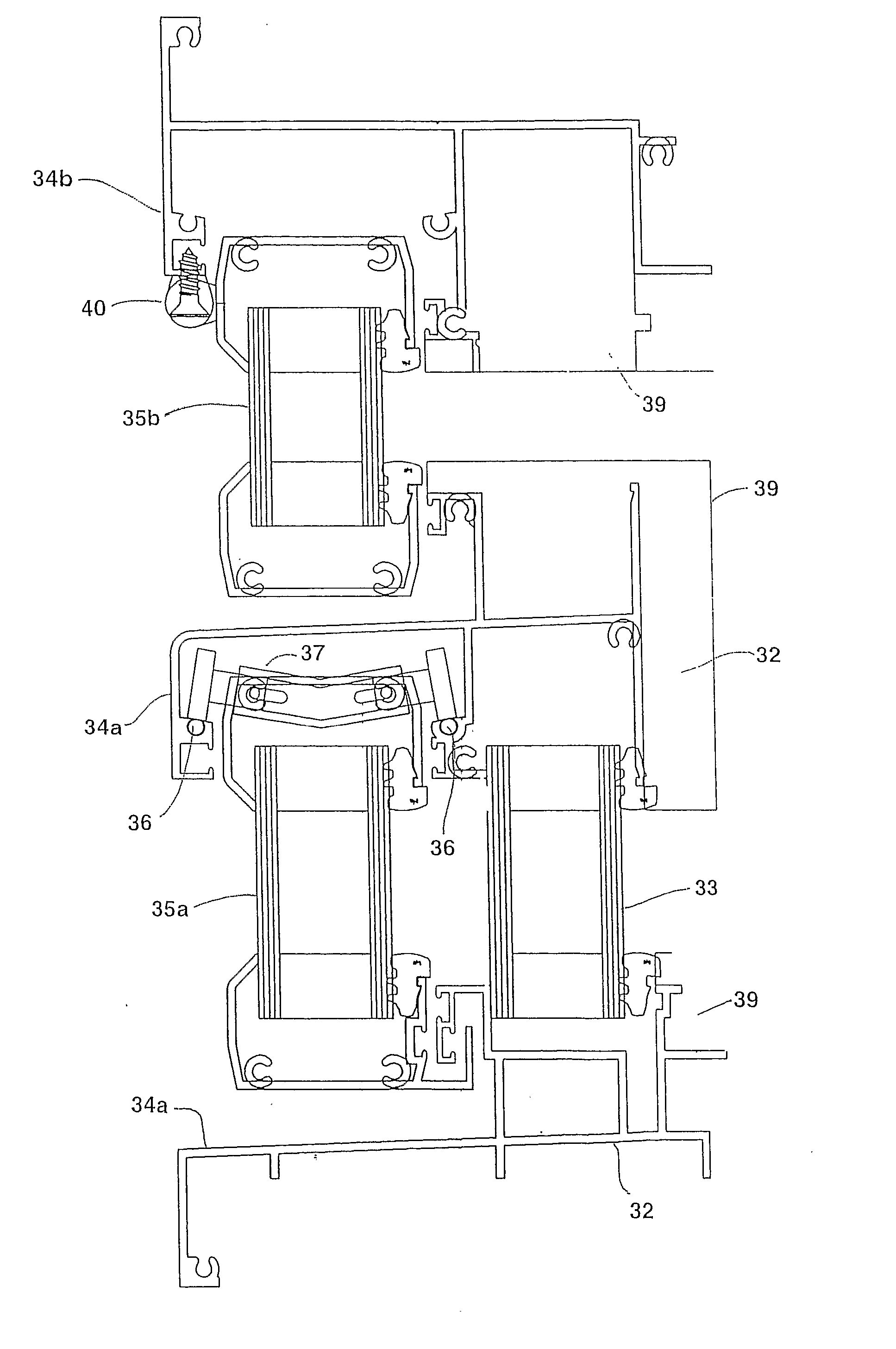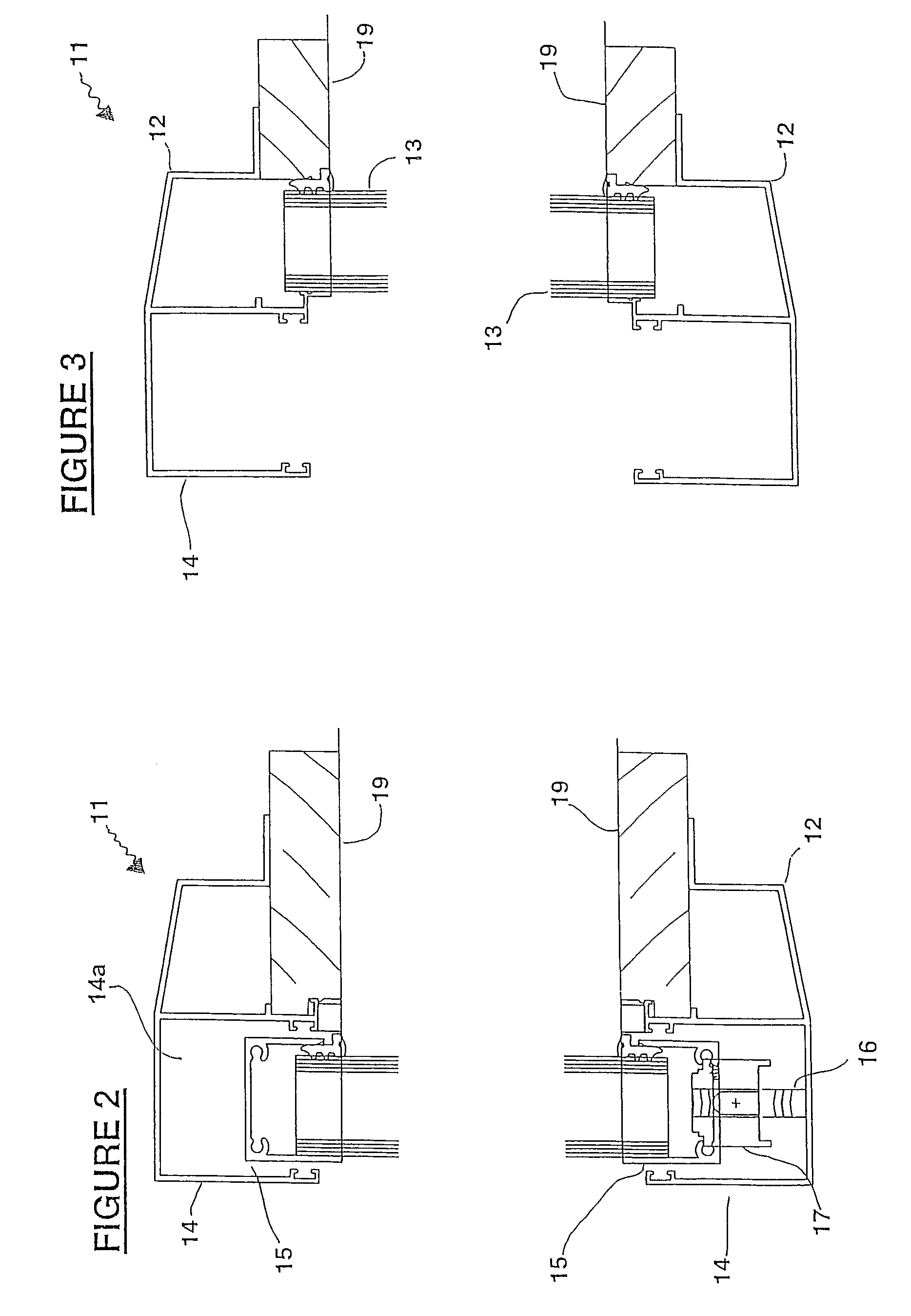Joinery system
a technology of joints and joints, applied in the direction of wing frames, doors/windows, wing arrangements, etc., can solve the problems of not being directly suited to mass production techniques and applications, affecting the quality of wood joinery, and affecting the appearance of wood joinery, etc., to achieve the effect of reducing the cost of manufacture, and reducing the amount of cladding
- Summary
- Abstract
- Description
- Claims
- Application Information
AI Technical Summary
Benefits of technology
Problems solved by technology
Method used
Image
Examples
Embodiment Construction
[0130]FIG. 1 shows a side cross section view of an existing prior art composite clad joinery system.
[0131] The bottom or sill sections of the joinery assembly (1) shown illustrate a bottom rolling sliding panel which is located on the exterior side of the joinery.
[0132] The joinery (1) provides a fixed panel form (2) which locates a fixed panel (3). Also provided is a sliding panel form (4) which locates a sliding panel (5). The sliding panel (5) runs along a single monorail track (6) in the sill of the sliding panel form (4) using a carriage (7) linked to the underside of the panel framing components (8).
[0133] The joinery assembly (1) also includes various sections of cladding material (9) installed to improve the thermal insulative properties of the resulting joinery. Cladding components (9a), (9b) are applied to the exposed surfaces of the fixed panel form. Conversely, an additional cladding component (9c) is needed to cover and insulate further exposed surfaces of the slidin...
PUM
| Property | Measurement | Unit |
|---|---|---|
| length | aaaaa | aaaaa |
| thermal performance | aaaaa | aaaaa |
| temperature | aaaaa | aaaaa |
Abstract
Description
Claims
Application Information
 Login to View More
Login to View More - R&D
- Intellectual Property
- Life Sciences
- Materials
- Tech Scout
- Unparalleled Data Quality
- Higher Quality Content
- 60% Fewer Hallucinations
Browse by: Latest US Patents, China's latest patents, Technical Efficacy Thesaurus, Application Domain, Technology Topic, Popular Technical Reports.
© 2025 PatSnap. All rights reserved.Legal|Privacy policy|Modern Slavery Act Transparency Statement|Sitemap|About US| Contact US: help@patsnap.com



